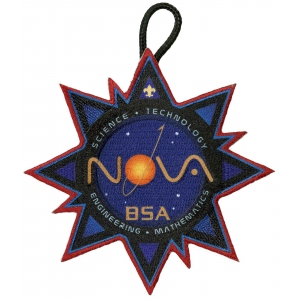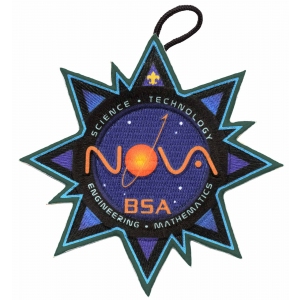Energy Technology
This activity can be done individually or in a group. The technology to harness energy has always been a significant factor in human progress. The harnessing of energy from wind, sun, water, biomass, fossil fuels, and other sources has evolved dramatically over time.
Part 1: Field Trip
Arrange and go on a field trip to a site where you can learn about innovative and/ or historical examples of energy production, storage, and use and the ways people are making such processes sustainable. Possible sites include power plants, fuel manufacturers or refineries, power generation sites, energy- or resource-efficient buildings, historical sites of energy use or production, educational centers, museums, and so on.
Part 2: Analysis and Report
- Create a report that describes your field trip and what you learned.
- For the energy production and/or use that you chose, find out about
the current state of technology, its course in historical that led to today's
technology, and future directions for this technology. Discuss the following
with your mentor.
- The effect on the environment, our natural resources, and our economy of our current methods
- Whether current methods are sustainable over the long term
Resources
- John Perlin. From Space to Earth: The Story of Solar Electricity. Harvard University Press, 2002.
- Terry S. Reynolds. Stronger than a Hundred Men: A History of the Vertical Water Wheel. The Johns Hopkins University Press, 2002.
- Robert W. Righter. Wind Energy in America: A History. University of Oklahoma Press, 2008.
Communication Technology
This activity can be done individually or in a group. It requires the participation of 20 to 30 people.
The scenario: You are the communication chair for a science fair being organized by your unit. Your responsibility is to gather contact information from all participants (contestants, judges, staff, and so on) and formulate a communication plan that will be effective for anticipated communications and necessary-but-unexpected communications as well. You will need to be able to communicate some information to everyone, other information to subgroups, and additional information to another group of individuals.
Part 1: Communication Plan
Before you get started, share your plan with your mentor. Then do the following:
- Solicit volunteers to serve as participants. Give each participant a mock role in your mock science fair. You will need 20 to 30 such individuals.
- From each participant, gather at least two ways to contact him or her, as well as an emergency contact. Participants should list their contact modes in order, from the most-likely-to-be-received to the least-likely-to-be-received.
- Set up plans for how you will broadcast messages to various subgroups, how you will get emergency messages to groups or individuals who will have access to the contact information, how access will be maintained, and back-up plans in case you are suddenly unavailable.
Think about the kinds of information you will need to communicate. This sometimes influences the mode of communication and should also be a part of your communication plans.
- Test your plan by playing a few Mad Libs via your communication plan. To test your communication plan, choose a particular Mad Lib and send out requests for various types of words (verbs, adjectives, nouns, and so on) to a group of individuals and subgroups. Make sure you cover your entire set of recipients or recipient groups, and be sure to give everyone a deadline for a response.
If you don't get responses, follow up with additional messages, perhaps via different communication modes. When you have what you need, make sure you communicate the finished Mad Lib back to the relevant individuals.
A Mad Lib is an unfinished story that is complete except for missing words, indicated by blanks. The words for each blank are in categories such as verbs, nouns, and adjectives. Missing words are supplied by folks who don't know the story, thus creating a funny, crazy, mad story.
Part 2: Analysis and Report
Gather some statistics relevant to your communication plan and your participants. Then do the following:
- Discuss with your counselor:
- The many distinct modes of communication your participants used
- Any modes of communication used but with which you were unfamiliar
- The technology used for your broadcast communication messages and whether that technology was the most effective mode of communication for one-on-one messages
- Create a report that outlines your communication plan, how you implemented it, and how effective it was. Include information about the biggest hurdle, anything unexpected that happened, and what you would do differently if this had been a real assignment for you.
Resources
- Roger Price. Best of Mad Libs. Price Stern Sloan, 2008.
- Roger Price and Leonard Stern. More Best of Mad Libs. Price Stern Sloan, 2009.
- For information about Mad Libs, go to www.madlibs.com . Click on the "Mad Libs Online Widget" to try it out.
Entertainment Technology
This activity can be done individually or in a group. Many of today's movies involve extensive use of technology to create illusions of magnificent landscapes, mythical beasts, epic battle scenes, and so on. This activity involves learning about some of these technologies and applying them in a real-life setting.
Part 1: Building Knowledge
Choose a favorite, recent movie that is heavily laden with special effects, available for home viewing, and accompanied by supplemental material that describes and shows how the special effects were created. After you have chosen a movie, do the following:
- Watch and study the material on the special effects.
- Do some supplemental research on some of these special effects to build your understanding of them.
- Choose one scene in the movie, or even one frame, and describe in detail to your mentor how that scene or frame was put together using various special effects.
- Discuss with your mentor which of the special effects you would implement (even if just crudely) if you were to take a still photo or make a short video and wanted to give the illusion of something magnificent or unusual happening.
Part 2: Creating a Grand Illusion
Develop a plan for creating a still photo or a short video that would require special effects to convey the image or action that you desire to show. Be sure you share your plan with your mentor before you get started. For a still photo, make a crude sketch of what you want the photo to look like. For a video, make a storyboard of the action sequence.
A storyboard is a sequence of rough illustrations that depict the primary scenes or action shots of your story.
In either case, describe the special effects you would use to create each element of the piece. Discuss the following with your mentor:
- What you would do first and how.
- The sequence of special events and how everything goes together in the end. Do as many of the parts of the photo or video yourself as possible and describe what would best be done by highly trained and/or educated professionals.
The elements of the video/photo that you created must be planned and implemented using the highest safety protocols. Have your mentor examine your plan and suggest improvements. Your mentor must approve it before you get started. Create a report that shows your understanding of special effects and how they might be applied to the photo or video that you envisioned.
Resources
- Troy Lanier and Clay Nichols. Filmmaking for Teens: Pulling Off Your Shorts. Michael Wiese Productions, 2010.
- Richard Rickett. Special Effects: The History and Technique. Billboard Books, 2007.
- Steve Wolf. The Secret Science Behind Movie Stunts & Special Effects. Skyhorse Publishing, 2007.
Source: https://www.scouting.org/stem-nova-awards/awards/venturer-supernova-topics/









